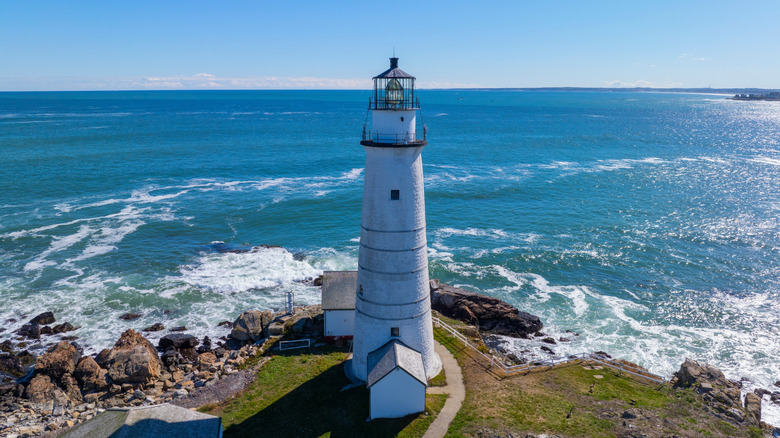Do Ships Still Use Lighthouses Today?
Back in the day, ships had to navigate using all manner of methods before GPS was invented. Now, it tends to be far easier for them to keep on course and to avoid potential hazards. Many may think that this means lighthouses are out of a job, but this isn't the case. These lonely sentinels of the shore may not be as critical as they used to be, nor perhaps as numerous, but they continue to serve the role that they've served for centuries.
When our power goes out, we often find ourselves reverting to the likes of candles, which once was our primary source of illumination at night. In just the same way, for all our advanced technology today, we still have lighthouses to fall back on when necessary. After all, the thing about such technology is that not all ships are equipped with it — and those that aren't, or are suffering from technical issues, can find themselves more reliant on lighthouses, as seafarers have historically been.
The Herald notes that James Addison, of Scotland's Northern Lighthouse Board, is frequently asked whether GPS tech has made lighthouses obsolete. "The answer he gives," per the newspaper, "is always the same: would you drive around at night with no lights on your car just because you've got satnav?"
It's a simple, yet convincing argument. After all, both lighthouses and GPS navigation exist to protect maritime travelers from something catastrophic, and if you have access to both, it only makes sense to continue to make use of both as appropriate. A sizable network of lighthouses around the world still helps to keep mariners safe, and some of them have been doing so for a very long time.
The development of automated lighthouses
The image of the noble lighthouse keeper — dashing up and down the many steps of their remote home in order to keep their crucial light burning — is an iconic one. The occupation has also become increasingly uncommon as time has moved on. Automation, just as it came to everything from factories to smart automated homes, came to lighthouses too.
In the United States, the National Park Service notes that the final lighthouse to be automated was in 1998, with the famous Boston Light of Little Brewster Island. It has great historical significance, having been claimed by the British after their capture of Boston during the Revolutionary War, defended by them, and then finally destroyed by them. In 1989, it became law that the rebuilt Boston Light be permanently staffed, making it one of a kind in the United States. The National Park Service notes that automation means that the iconic light is never out.
Lighthouses can be automated in different ways, depending on the logistics of the area. The Bell Rock installation — a hardy lighthouse 11 miles away from the coast of Scotland — was originally automated in 1998, with that system replaced by one that focused on electricity to power its primary light, rather than the volatile gas acetylene. In the late nineteenth century, some automatic lighthouses were developed using a clockwork design, with a supply of gas delivered and the light manipulated as dictated by a system that had to be wound and reset. An elegant solution, but one that has transitioned more broadly to the use of modern technology such as solar panels and the good old fashioned power grid.
How many lighthouses are still in use around the world today?
Guinness World Records reports that the United States has built the most lighthouses of any country, with a total of more than 1,500. Approximately 670 of them remain today, though that doesn't mean each lighthouse is still operational. That said, a wide range of lighthouses in the U.S. and around the world are still used by ships. The Tower of Hercules — a Roman lighthouse that is still in use today in Galicia, Spain — is the oldest functional model in the world, dating back to the first century.
There are also navigational aids such as buoys (solar-powered, in some cases) helping to illuminate routes and hazardous areas of the water for mariners today. Technology like the Automatic Identification System on some vessels also helps ease navigation and communication between land and sea, which further decreases reliance upon lighthouses. Ultimately, though, lighthouses have continued to be relevant because they've continued to adapt.
Some Arctic lighthouses, for instance, manage their solar power output so that summer supplies are retained for the long, dark winters in the region. The need to venture into such remote and challenging regions, meanwhile, is drastically reduced by developments in automation, which allow lighthouses' output and needs to be managed away from the site. Secondary systems can also kick into action should there be any faults.
Custodians of these installations, similarly, can have a reduced, yet still prominent place. In the United Kingdom, there are no longer any permanent lighthouse keepers, but the Association of Lighthouse Keepers notes that this doesn't mean automated lighthouses are simply left to their own devices around the clock, as "they are still looked after by a number of part time Attendants and Retained Lighthouse Keepers."


